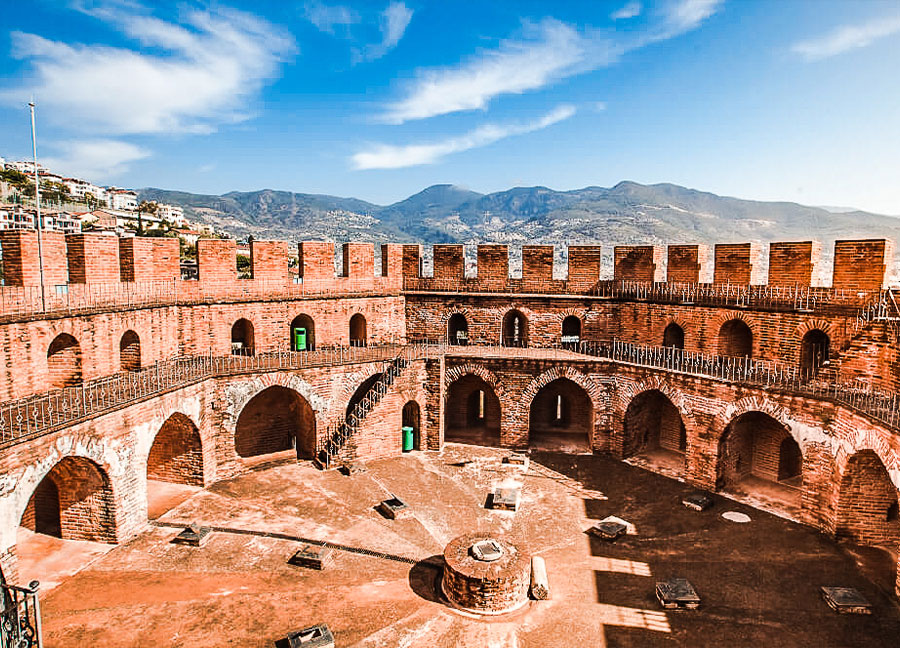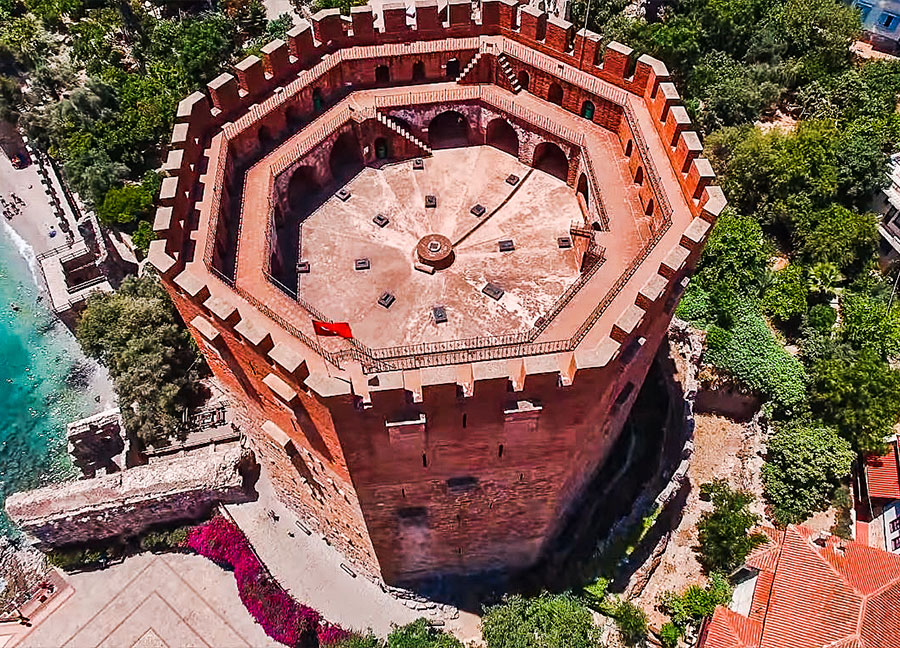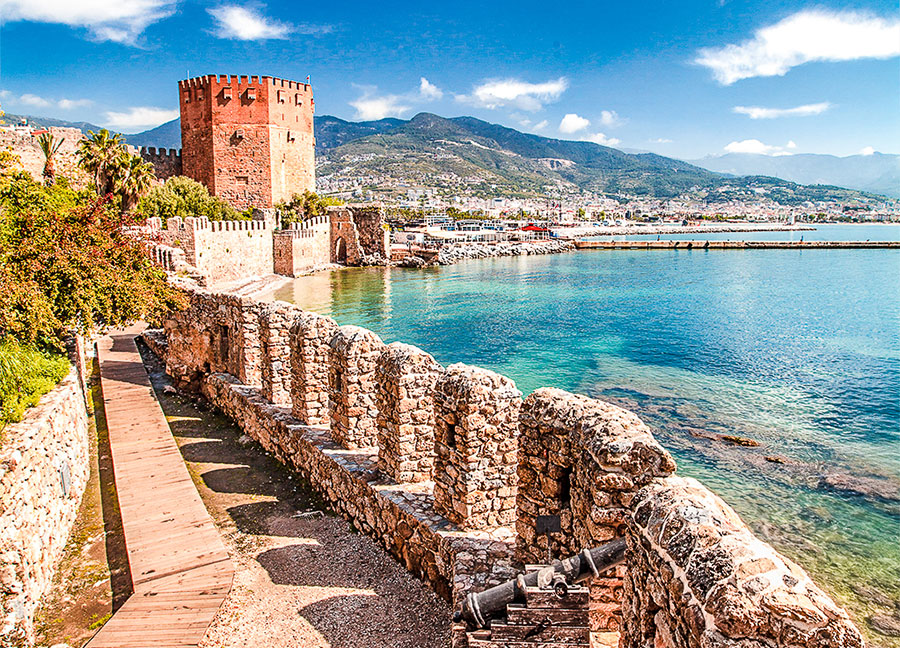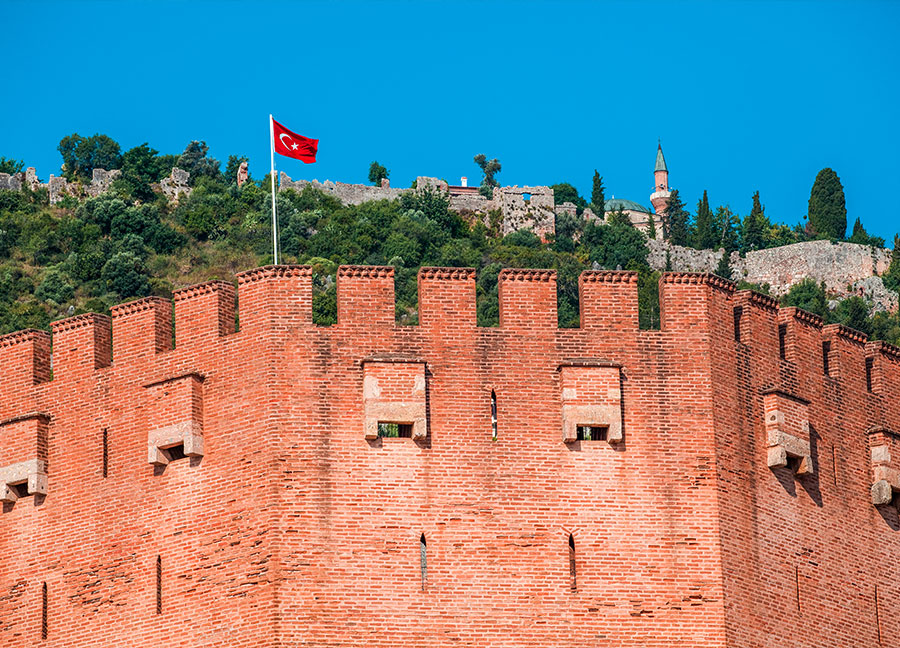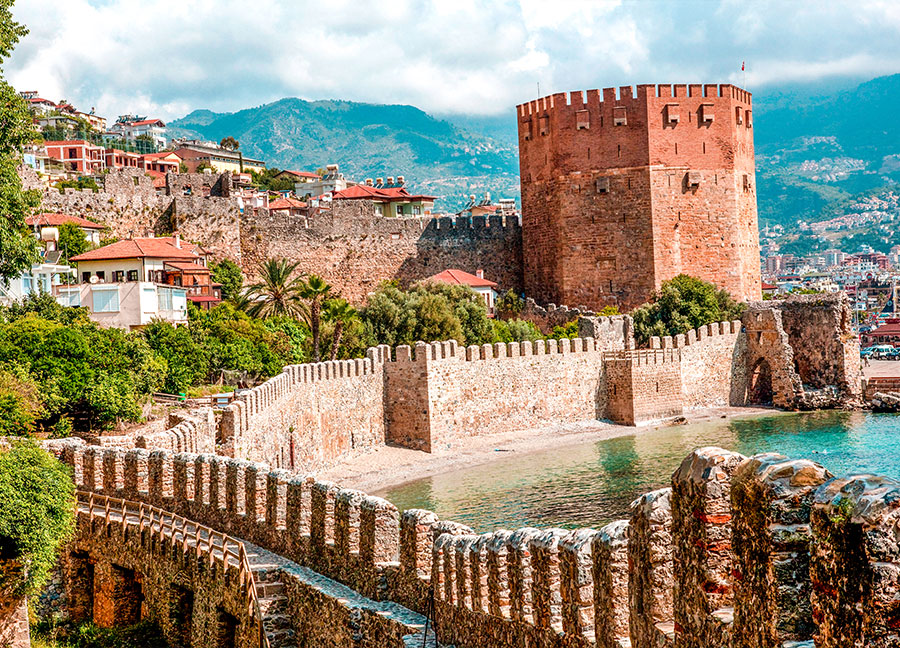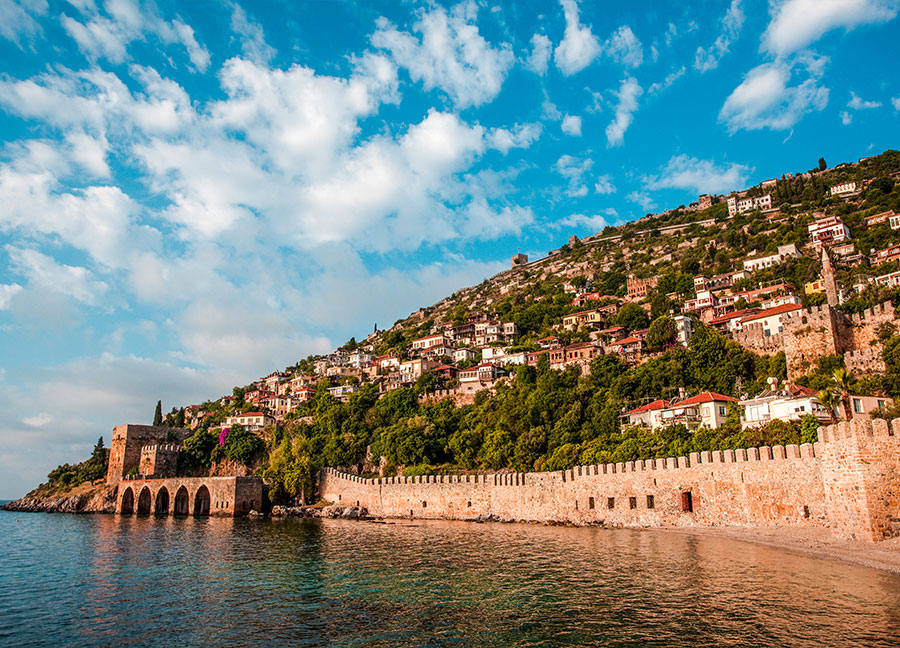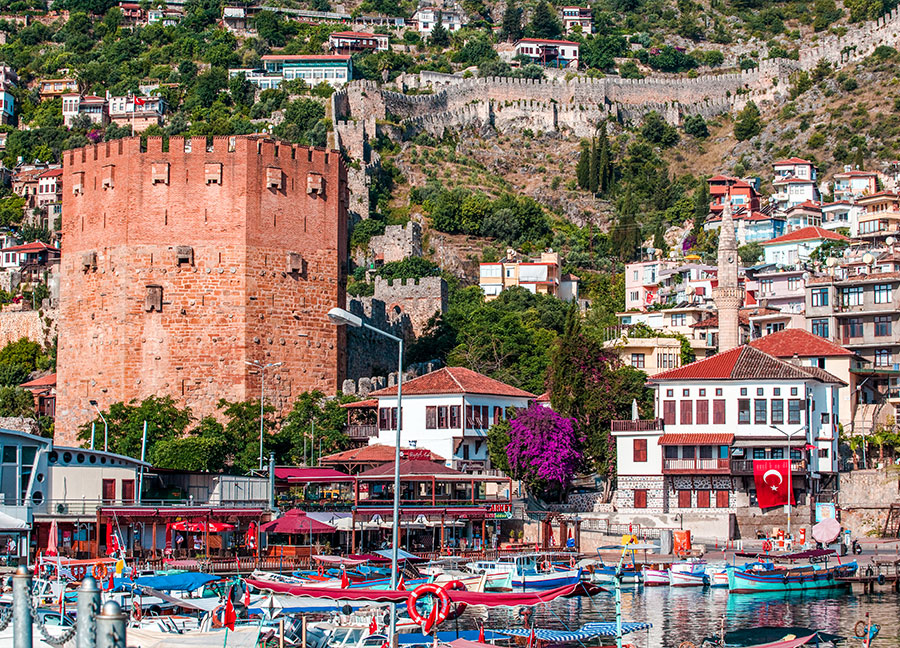Kızılkule is a unique example of 13th-century medieval architecture. The Seljuk Emperor Alaeddin Keykubad built it I, an architect named Ebu Ali from Aleppo (Syria), to protect Alanya against attacks from the sea.
A design wonder with its colour, plan and architectural features, Kızılkule is 29 meters in diameter and 33 meters in height. It got its name from the cut stones on its upper and lower parts. There is an elevation difference of 2 meters between the east and west facades due to its base location. It was built in an octagonal plan and has 5 floors. Although it has a simple exterior, it surprises those who see it with its complex interior structure. All floors have a different plan and have defensive observation battlements and open-fronted trenches. The section rising from the middle of the ground floor to the fifth floor has served as a water cistern and is the backbone of the tower.
Kızılkule was repaired in 1951-1953, and in 1979 the entrance and first floor of the tower were organized as the Ethnography Museum. In the museum, local artifacts such as carpets, rugs, weaving looms, clothes, kitchen utensils, weapons, weighing instruments, lighting tools, weaving looms and tents reflect the Yörük culture of the Taurus are exhibited, revealing the cultural values and lifestyle of Alanya.
The tower is the symbol of Alanya with its magnificent appearance. Cultural and artistic events such as exhibitions and classical music concerts are also held from time to time.
On the top floor of the tower, all floors can be visited. A magnificent city view awaits its visitors. A bird's-eye view of the harbour, armoury, shipyard, ramparts, breakwater and the famous shipyard beach with the exquisite panoramic view of the east side of Alanya gives visitors an unforgettable experience.


